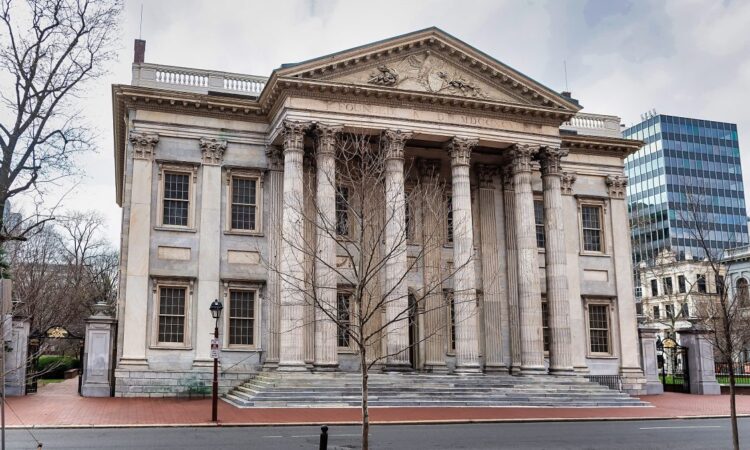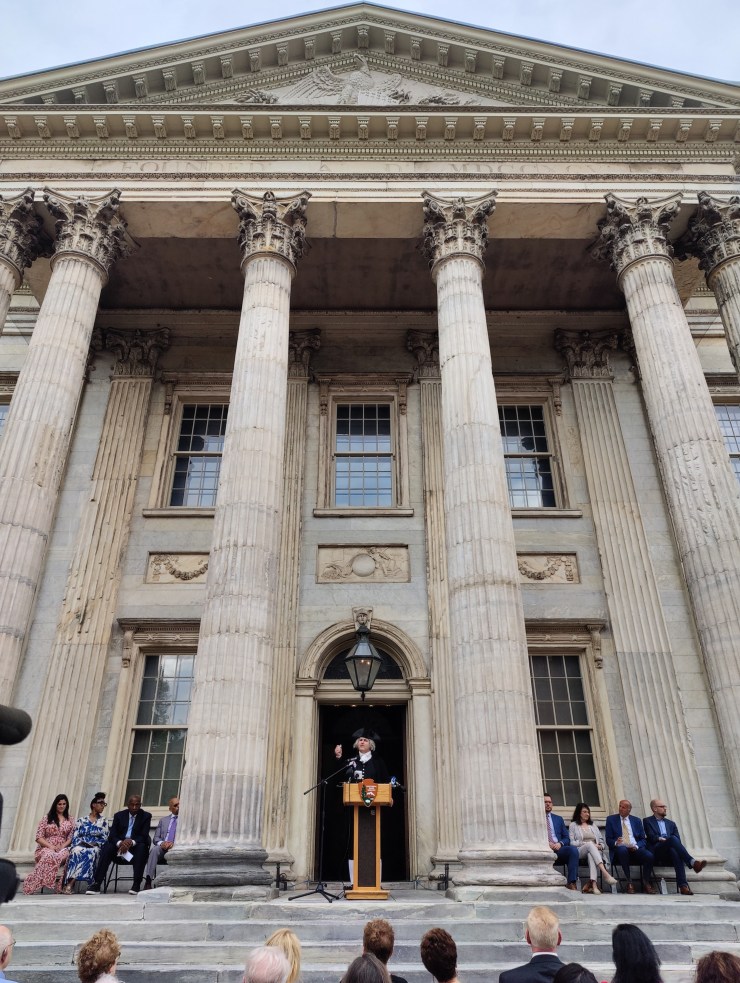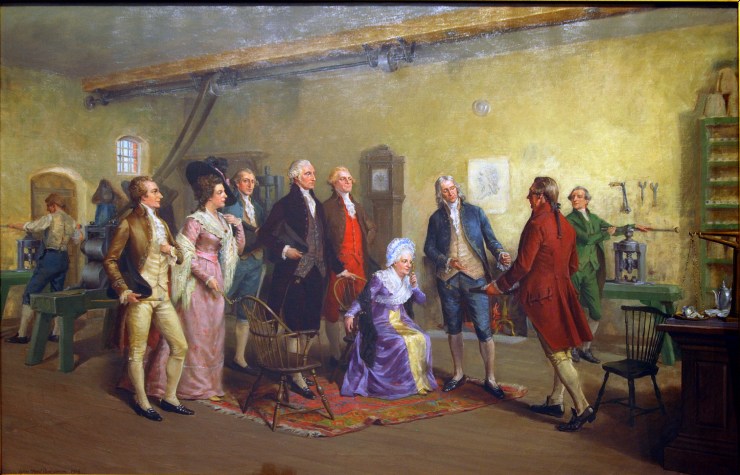
The National Park Service has a big idea to turn the original First Bank of the United States, built in 1797 in Philadelphia, into a new museum of the American economy.

The First Bank was a glimmer in the eye of Alexander Hamilton — yes, that Hamilton, whose name became the title for the musical — who went to the mat against Thomas Jefferson to establish a national banking system:
“Are you ready for a cabinet meeting?” George Washington says in one of “Hamilton” the musical’s rapid-fire Cabinet debates. “The issue on the table: Secretary Hamilton’s plan to assume state debt and establish a national bank. Secretary Jefferson, you have the floor, sir.”
Hamilton’s centralized banking system won that battle with a 20-year charter. Ultimately it did not last, but the building is still there in Philadelphia — not far from other attractions like Independence Hall and the Liberty Bell.
It’s been closed to the public for about 50 years, but people are still coming just to stand on Alexander Hamilton’s steps, according to Independence National Historical Park spokesperson Andrew McDougall.
“This was in the works before that came about, but ‘Hamilton’ did spark a lot of interest,” he said. “Especially for park visitors because they want to see the exterior of Hamilton’s bank.”
McDougall himself was standing on those steps during a ceremony this summer to announce the Park Service is close to raising $50 million — mostly from the 2020 Great American Outdoors Act — to transform the First Bank of the United States into a new museum of the American economy.
“We tell the story of the Declaration of Independence, the Constitution, the Revolutionary War … we don’t tell the story of money,” said Thomas Caramanico, director of the Independence Historical Trust, which is raising money for the new museum. “We’re going to finally be able to tell that story in this building.”
Some of the stories will show how the nation has been shaped by things like wealth, land ownership and the economy of slavery.
“You’ll meet Priscilla, an enslaved woman who lived to be about 65 years old on a South Carolina rice plantation,” said exhibition designer Andrea Worby of the firm Local Projects. “She contributed to her enslaver’s wealth through field and housework and the birth of 10 children.”
There are only a few places you can visit to learn about the history of the economy. Many branches of the Federal Reserve across the country have money museums set up in their lobbies. One of the largest is in Chicago, which gets more than 50,000 visitors a year.
The Philadelphia Mint, only blocks away from the First Bank, has about 220,000 people visit every year. Visitors can see how the federal government strikes coins and get a primer on how money built the nation.
“People come here because it’s money. People love money,” said Tim Grant of the U.S. Mint Philadelphia. “They love history.”
The history of the country is literally written on its money. When America won its independence, it was still completely reliant on foreign currencies.
“There were many coins in circulation. The most used was the Spanish piece of eight, but there was other foreign coinage as well,” said Grant. “It could be confusing for a merchant as they’re bartering to buy something. We knew we had to put a mint together.”
Grant points to a painting on display in the Mint’s exhibition, “Washington Inspecting the First Money Coined by the United States” (1914) by John Ward Dunsmore, featuring George and Martha Washington, Thomas Jefferson and Alexander Hamilton reviewing new U.S. coins in 1792.
The National Park Service plans to open its new museum of the American economy in 2026, in time for the nation’s 250th birthday.

There’s a lot happening in the world. Through it all, Marketplace is here for you.
You rely on Marketplace to break down the world’s events and tell you how it affects you in a fact-based, approachable way. We rely on your financial support to keep making that possible.
Your donation today powers the independent journalism that you rely on. For just $5/month, you can help sustain Marketplace so we can keep reporting on the things that matter to you.





